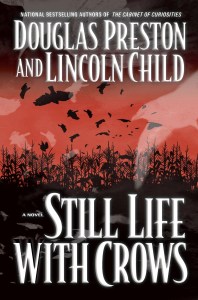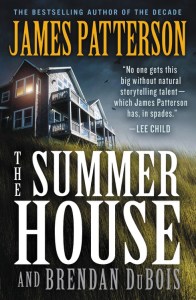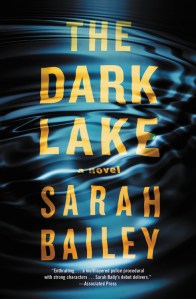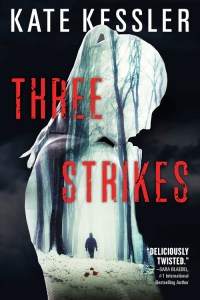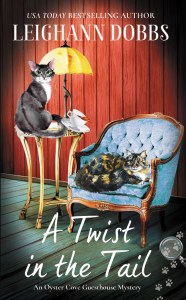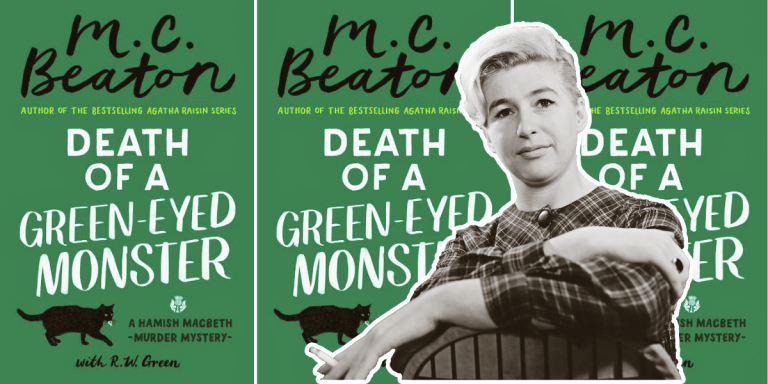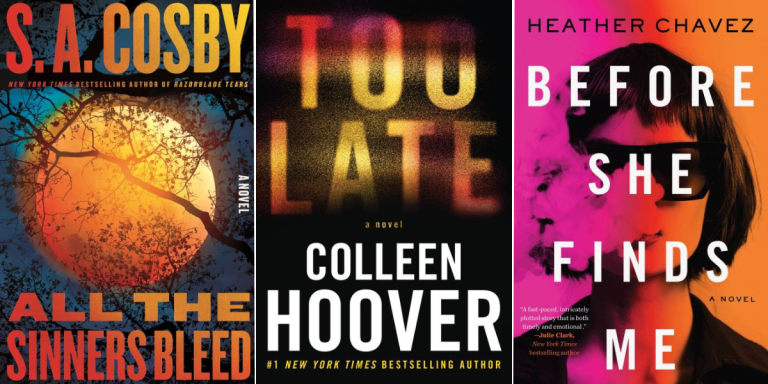Why Small Towns and Villages Are a Favorite Setting for Murder Mysteries
 If mystery novels, detective dramas on PBS, BritBox and A&E, and true-crime podcasts have taught us anything, it is these things:
If mystery novels, detective dramas on PBS, BritBox and A&E, and true-crime podcasts have taught us anything, it is these things:
Idyllic English villages whose inhabitants include mild-mannered (but sharp-eyed) little old ladies are likely to see a disproportionate number of murders.
The same applies for picturesque American small towns that are home to a thriving independent bookstore, a much-loved library, a respected bakery or caterer’s, or similar establishment. Bonus points if one of the town’s residents happens to be a well-known mystery writer. (The small business owner, the librarian, and the mystery writer are almost always a step ahead of law enforcement in catching the killer. But that is a topic for another essay.)
And if one travels to a town with “Midsomer” in its name, it is highly advisable to take out extra life insurance.
Small towns and villages have been a favorite setting for murder mysteries for many years, from the earliest days of the genre, through the Golden Age of Detection with its classic novels, up to today’s cozy mysteries and chilling thrillers.
Human nature is the same the world over. There are people who are good and honest, or who’ve made mistakes in life and are making a good-faith effort to move on. And there are people who are devious, cruel, and calculating. You find these people wherever you go, both in large cities and in small towns.
There is no one definition of what a small town looks like. It may be one of those postcard-perfect, manicured places with pies cooling on the windowsill and a band playing in the town square. Or it may be one of those seen-better-days places that are a little isolated from the rest of the world. Even a neighborhood in a large city can fit the definition of a small town.
As there are many kinds of small town, there are many kinds of people who live in such towns. They may be friendly and welcoming to anyone who visits. (Or so it seems.) Or they may be suspicious of outsiders and of each other.
So, what is it about small towns that make them such an effective setting for murder novels? There are quite a few reasons why this might be.
A small town or village may present itself as being a place of safety, of comfort, of innocence, far away from the “dangers” of the city. This perception makes a dramatic foil to the darkest aspects of the human heart; when a murder does happen in this seemingly safe place, it is particularly jarring and frightening. It is also a sobering reminder that no place is guaranteed to be absolutely free from crime and violence. Indeed, in a small town where everyone knows everyone’s business (whether they like it or not), the darker sides of humanity may be magnified.
Agatha Christie’s Miss Marple makes her home in the village of St. Mary Mead, somewhere in the English countryside. (The location has never been consistently verified; there is a St. Mary Mead, Kent, in Christie’s The Mystery of the Blue Train, but there doesn’t appear to be definite evidence that this is Miss Marple’s St. Mary Mead.) St. Mary Mead has no shortage of drama, intrigue, scandal, and murder, and some of it is enough to have the local law enforcement baffled. But at every turn, Miss Marple is there to ferret out the truth and help bring the culprits to justice.
The Midsomer Murders, the long-running television series set in the fictional English county of Midsomer, has enough bizarre, twisted murders and soap opera–worthy drama to delight legions of crime fans, and probably to horrify a local police chief or a public prosecutor.
In The Murder of Roger Ackroyd, Hercule Poirot settles down in the little village of King’s Abbot to retire and grow the much-mentioned vegetable marrows. But the retirement does not last, and Poirot soon abandons the vegetable marrows and village life to return to detecting in London: “In truth, the retirement, I care for it not at all,” he will later lament to his friend Captain Hastings. The 1999 television adaptation of the book shows Poirot being particularly dejected and disillusioned with country life in the aftermath of the murder investigation, sadly reflecting how the charm of the village and the smiling faces of the people can conceal such depravity.
A person living in a city can (usually) be assured of some degree of anonymity. In a small town, if it’s the kind of town where everyone knows everyone’s business, it’s harder to keep secrets hidden or keep judgment at bay. Especially if it’s a town where gossip can spread like wildfire, and if someone has a very large ax to grind. In Sophie Hannah’s The Monogram Murders, a continuation of the Hercule Poirot series, a triple murder in a London hotel sends Poirot and his new sidekick, Inspector Edward Catchpool, to the little village of Great Holling. There, they learn that a terrible scandal, built on vicious gossip and slander, resulted in two suicides. The fallout from the affair was so toxic that even nearly two decades later, the villagers are reluctant to discuss it: either out of fear of being targeted next, or out of guilt for their own involvement in what happened.
Catchpool finds himself feeling so ill at ease in the village, with the prying eyes of the inhabitants, that he is anxious to get on the first train back to London.
In the short story “The Adventure of the Copper Beeches”, Sherlock Holmes and Dr. Watson come to the assistance of a young governess who believes that there is something very sinister about the family for whom she has just started working. As Holmes and Watson are heading out into the country, Watson makes remarks about the beautiful scenery and the lovely country houses. But Holmes takes a more jaundiced eye: “It is my belief, Watson, founded upon my experience, that the lowest and vilest alleys in London do not present a more dreadful record of sin than the smiling and beautiful countryside.”
Holmes’s viewpoint stems largely from the opinion that in cities, people live close enough together that there is no way that a horrific crime can go unnoticed or a cry for help will go unheard. While this is somewhat debatable, the great detective does have a point in that in a small town, if it is sufficiently isolated or lacking in resources, it can be harder for someone to get help in an emergency.
A favorite plotline in small-town murder mysteries involves someone moving from the city to a small town, either to start a new life with new enjoyments or to get away from something in their past. More than one cozy mystery has, as its basic plot, a woman moving away from the city to a small town where she has family connections, setting down roots, taking over a small business, getting involved in at least one murder, and getting romantically involved with the police officer or detective overseeing the case.
Regarding cozies, it is noted that a lot of cozy mysteries take place in small towns, usually fictional ones invented by the author: Aspen Meadow, Colorado (Diane Mott Davidson’s Goldy Schulz series); Lake Eden, Minnesota (Joanne Fluke’s Hannah Swensen books); and Stoneham, New Hampshire (Lorna Barrett’s Booktown series), to name a handful.
A small town with a regular cast of eccentric characters, and some favorite landmarks and hangouts, is a familiar place for readers to return to with each new installment in the series. It’s comforting to be able to go back to the local bookshop or the library, follow the characters as they get a bite at the local cafe, and get the latest scoop about ongoing romances and neighborly feuds.
From a practical perspective, however, one has to consider that all of these cozy mysteries (one to three murders per book, and each series having seven or more books) mean that these little towns have a rather elevated per capita homicide rate. But then, most of us tend not to think of real-world minutiae like crime stats when we read a mystery. We’re in it for the characters, the drama, the plotting and puzzling, and of course, the murder.
It is clear that a small town or village has ample opportunities for drama and mystery. And small-town life does not equate to “boring.” Not by a long stretch.
One year ago, Kate Hibbert moved to the Scottish village of Lochdubh. Since then, she’s been a growing annoyance to the village’s inhabitants, with her prying ways and her excessive eagerness to help out. When Kate is reported missing, two weeks after she was supposedly seen heading for the bus stop with a heavy suitcase, Sergeant Hamish Macbeth is called upon to investigate. But this investigation proves to be more dangerous than expected, as Macbeth turns up a tangled web of lies, secrets, and deceit, and ends up putting his job on the line.
Detective Jackson Brodie now makes his home in a small seaside town, working on cases while co-parenting a teenage son with his ex-girlfriend. Brodie is working on a routine adultery case, shadowing a supposedly unfaithful husband at the behest of the suspicious wife. But things take a sudden turn when Brodie talks a man out of jumping off of a cliff overlooking the sea. Soon, Brodie and his old allies are investigating a tangled web of murder, secrets, and human trafficking involving some very influential people in town.
The small town of Medicine Creek, Kansas, is experiencing a horrific series of gruesome, ritualistic murders. The eccentric, cultured, and scholarly Special Agent Pendergast is brought in to investigate. Together with misfit teen Corrie Swanson, Pendergast looks into the circumstances surrounding the murders, and learns of a local legend involving a nearby cave system, a series of killings more than a century before, and rumors of a curse.
Seven people have been shot and killed at the Summer House: a seen-better-days vacation home near Savannah. The killers, according to surviving witnesses, are a group of Army Rangers just returned from active duty. Major Jeremiah Cook and his team are sent in to investigate. But Cook finds that there are a lot of long-hidden secrets surrounding the Summer House. And people in the community are determined to make sure those secrets stay hidden.
Rosalind Ryan was a mystery in life. The daughter of one of the wealthiest families in the small Australian town of Smithson, and an impossibly beautiful though mysterious girl, she moved away to Sydney, but returned to her hometown to work as a drama teacher. Now she has been found dead in a local lake, and it falls to Detective Sergeant Gemma Woodstock, one of Rosalind’s high school classmates, to investigate. As Gemma investigates, she finds that a lot of aspects of Rosalind’s life seem to contradict each other. And as Gemma digs into the secrets around Rosalind’s mysterious life and death, she has to deal with the secrets that she has been keeping in her own life.
Audrey Harte has moved on from a tumultuous past as a teenager to become a successful criminal psychologist in the small New England town of Edgeport. She has a good relationship with her family and her boyfriend, and all seems well. One day, a teenage girl named Mackenzie arrives in Edgeport. She claims that she is the daughter that Audrey’s late friend, Maggie Jones, had as a teenager and gave up for adoption. Audrey helps Mackenzie find out the secrets of her past. But a lot of people in Edgeport seem determined to keep Audrey from finding out some of those secrets, and Audrey begins receiving threatening phone calls and letters.
Josie Waters is the new owner of the Oyster Coast Guesthouse in Oyster Cove, Maine–and with it, the guesthouse’s two resident cats, Nero and Marlowe. Josie, who is in the process of rebuilding her life, is determined to succeed in her new role as innkeeper. But her plans hit a serious snag when a food critic, her first new guest, is found dead, and she becomes one of the prime suspects in the eyes of law enforcement. But it turns out that Nero and Marlowe are two very intelligent and perceptive cats who know a thing or two about sniffing out wrongdoers…
By clicking 'Sign Up,' I acknowledge that I have read and agree to Hachette Book Group’s Privacy Policy and Terms of Use
What to Read Next
Erin Roll is a freelance writer, editor, and proofreader. Her favorite genres to read are mystery, science fiction, and fantasy, and her TBR pile is likely to be visible on Google Maps. Before becoming an editor, Erin worked as a journalist and photographer, and she has won far too many awards from the New Jersey Press Association. Erin lives at the top floor of a haunted house in Montclair, NJ. She enjoys reading (of course), writing, hiking, kayaking, music, and video games.


